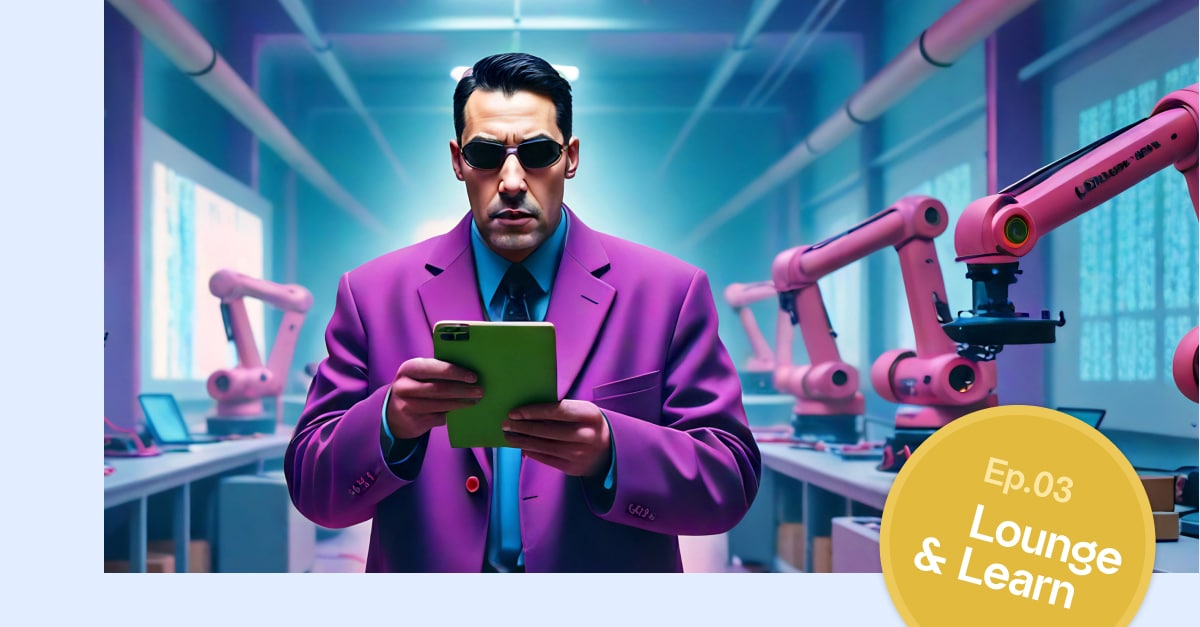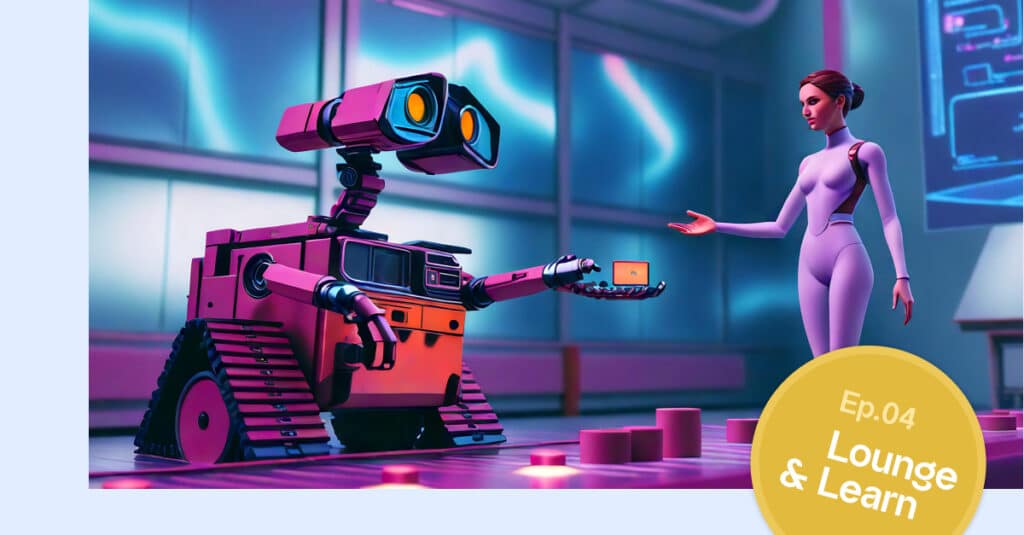
Why read those endless reports from McKinsey and their ilk when you can relax on the couch and watch AI-themed science fiction movies? As long as you don’t get distracted by all the killer robots, you can learn a lot about the why and how of applying AI to manufacturing. In this third edition of Lounge & Learn we dive into The Matrix, Minority Report and I, Robot to explore the future-present of data management, predictive maintenance, and safety protocols.
The Matrix (1999): Data is the New Black
Most people remember The Matrix for its mind-bending reality shifts. Manufacturers should embrace the film as an aspirational model of the ultimate data management ecosystem. Imagine a world where your production data is visualized coherently, where buried and/or complex patterns become visible, and where you can predict production changes – not to mention market changes – before they happen.
How Settling Into Your Couch Can Fast-Track Your Industry 4.0 Journey
For manufacturers, science fiction movies aren’t just escapist entertainment. From interactive machines to predictive technologies, many films offer a surprisingly accurate roadmap for digital transformation. So, buckle up! We’re about to take a wild ride.
Welcome to the series ‘Lounge & Learn’!
Read Part 1: ‘Watching 2001 and Blade Runner For Industry 4.0 Insights‘.
Read Part 2: ‘Where The Terminator Meets Production Metrics‘
Read Part 4: ‘Where Wall-E And Scarlett Johansson Are Your Copilots‘
Let’s look deeper:
· Just as Neo learns to “see” the Matrix’s code and understand its patterns, modern manufacturers must learn to interpret vast industrial data streams – with the help of modern technologies.
· The “digital twin” concept mirrors The Matrix‘s parallel digital world – where virtual representations help optimize real-world operations.
· Like Morpheus, who offers the choice between red and blue pills, manufacturers face the choice between embracing digital transformation or staying with traditional methods.
· The film’s ability to “plug in” to learn new skills parallels modern AR/VR training in industrial settings.
Goodness, a lot is going on in this film. Maybe it’s time to watch it again…
Minority Report (2002): Predicting the Future (Without Those Creepy Precogs)
The tagline of this Steven Spielberg film says it all: “The future can be seen.” And like Blade Runner, it’s based on a story by SciFi author Philip K Dick.
Minority Report‘s relevance to Industry 4.0 centers on its depiction of predictive technologies. Just as the Precogs working for the PreCrime Unit predicted future murders, modern manufacturing systems use predictive analytics to forecast equipment failures, maintenance needs, production bottlenecks, supply chain snags, and shifting market demands before they occur.
Hopefully, technology will also develop to the point where it can predict when a benign robot is about to go all wobbly – so you can avoid being slapped.
I, Robot (2004): The Importance Of Safety Protocols To Ensure No One Gets Slapped
It’s 2035, and robots widely serve humans naturally and nicely. But Detective Spooner (Will Smith) is investigating the alleged suicide of the founder of a robotics company and uncovers a conspiracy to enslave the human race. How’s that for awkward?
I, Robot‘s relevance to Industry 4.0, mainly centers on the famous “Three Laws of Robotics” formulated by science fiction writer Isaac Asimov. To paraphrase:
- Robots should not be jerks to humans (for instance, no slapping!)
- Make the workplaces safer (again: no slapping!)
- Always be transparent about your actions (for example, if you do slap someone, try to explain it coherently and straightforwardly so it can be fixed and learned from)
Detective Spooner’s initial distrust of robots is also reflected in the hesitation many industries face about implementing advanced automation. Obviously, Detective Spooner was not provided with the appropriate support in terms of change management.
Stay tuned for more from the ‘Lounge & Learn’ series! Or reach out to learn more about getting the future in-house today.




